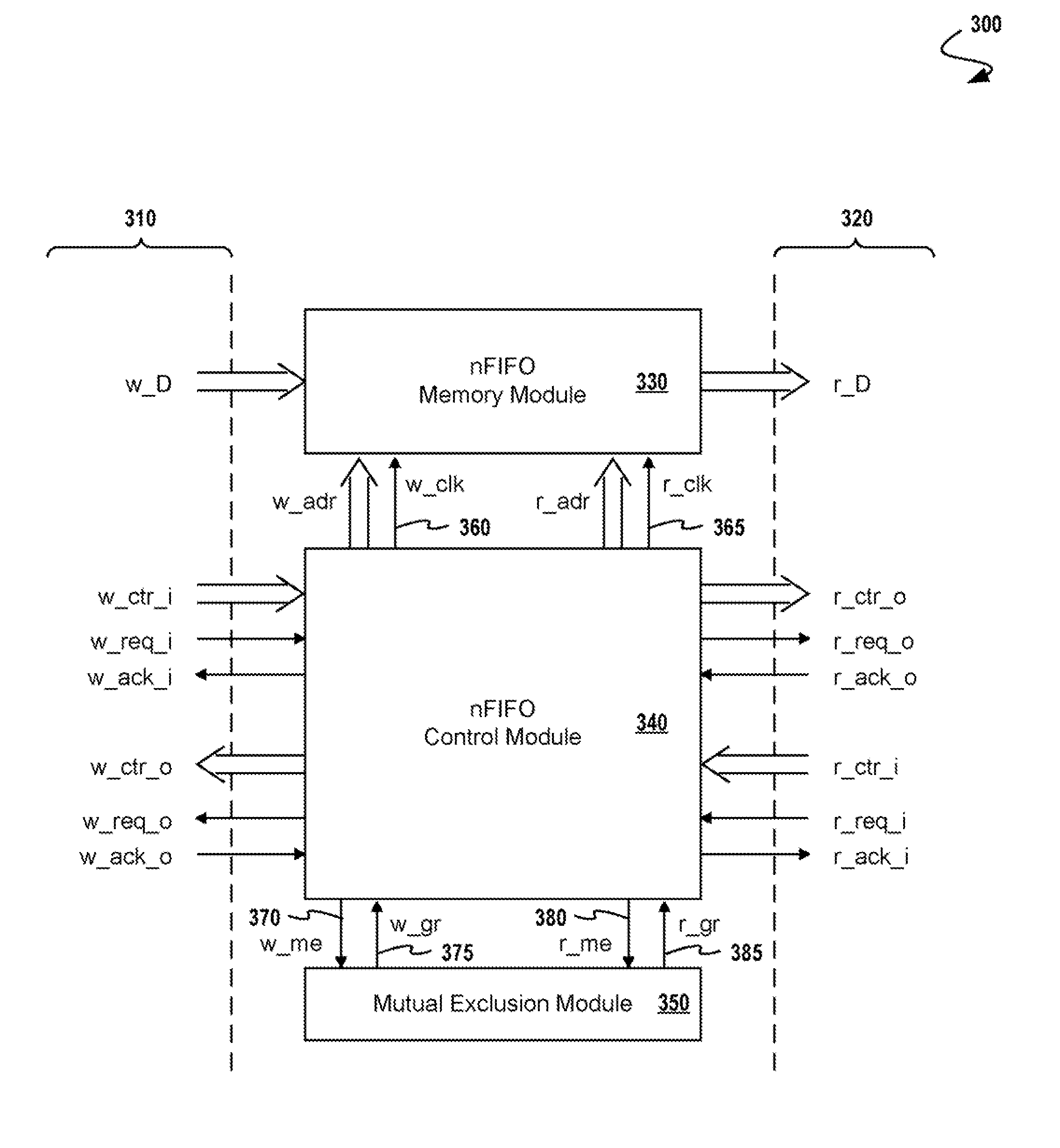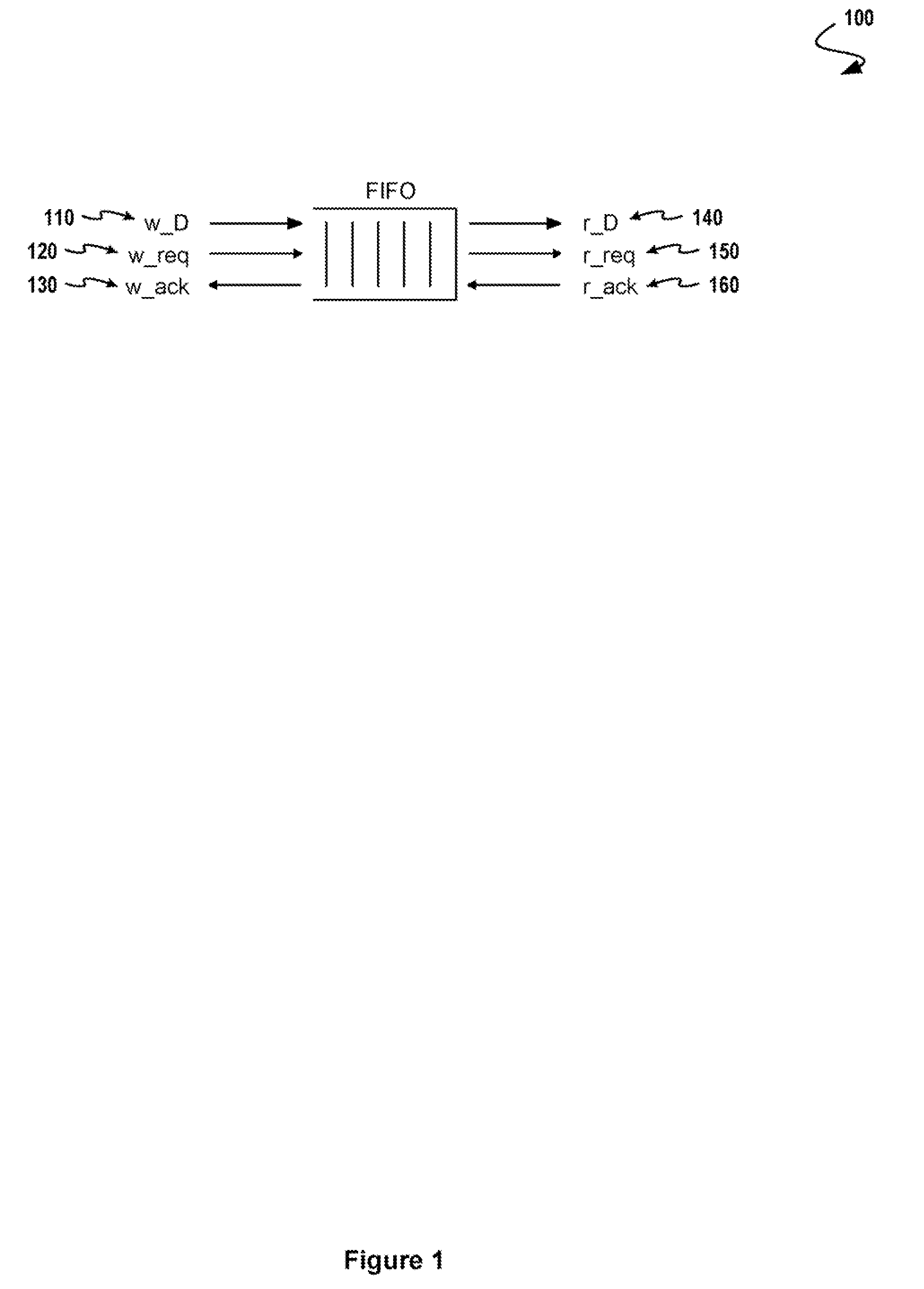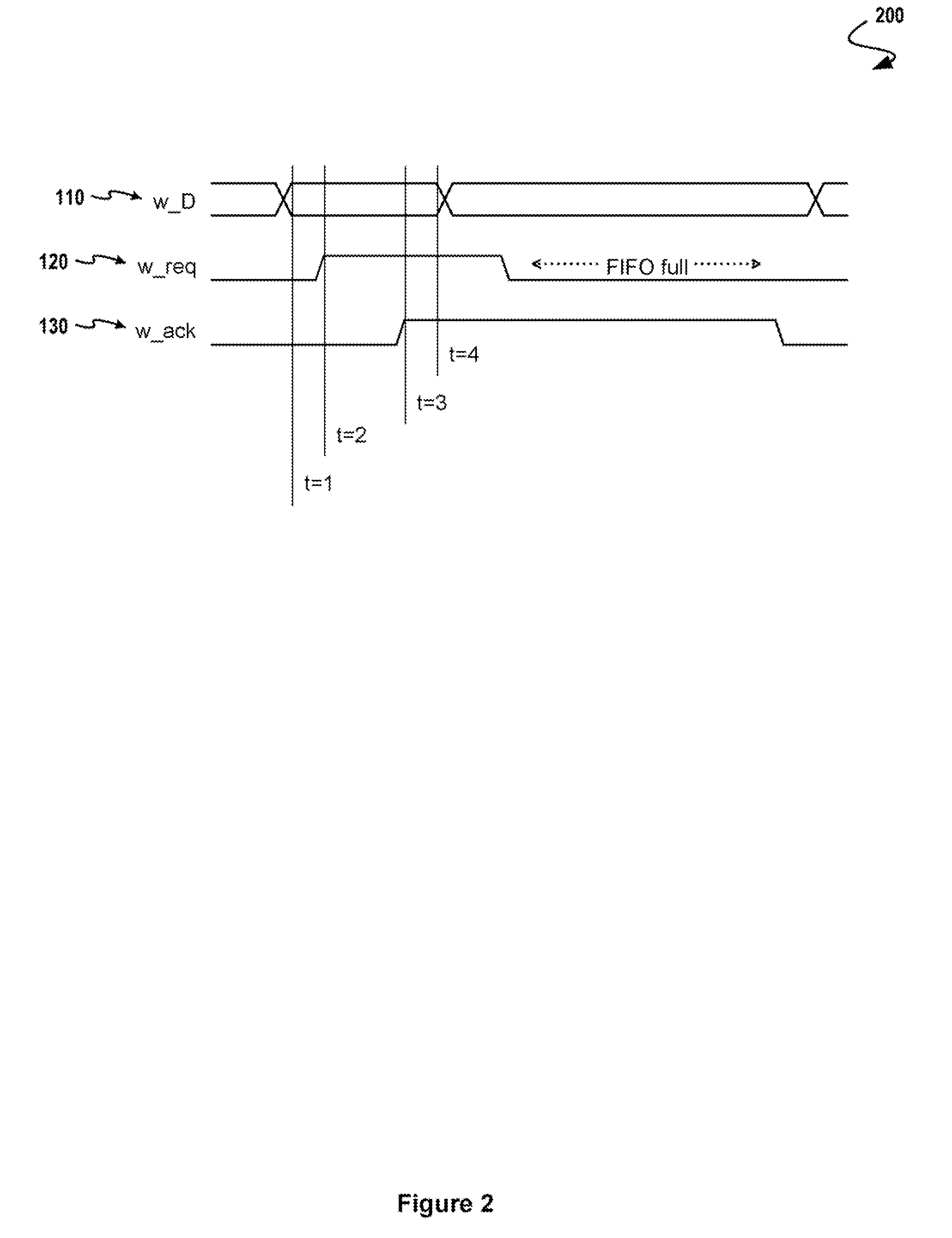Asynchronous Scheme for Clock Domain Crossing
a clock domain and clock domain technology, applied in the field of asynchronous logic circuits, can solve the problems of different circuits, delay imposed by handshaking circuitry, and metalatability and latency
- Summary
- Abstract
- Description
- Claims
- Application Information
AI Technical Summary
Problems solved by technology
Method used
Image
Examples
Embodiment Construction
[0039]As fabrication techniques for electronic systems advance, so does the likelihood that a given electronic system will comprise multiple subsystems, each subsystem based on differing clocking schemes. For example, a system might comprise multiple synchronous subsystems (e.g. a heterosynchronous design) in which each of the synchronous subsystems might operate at precise integer multiples of clock speeds or, more likely, each of the synchronous subsystems might drift slightly from the design frequency, resulting from manufacturing and / or environmental variations. Other systems might combine subsystems in some mixture presenting synchronous as well as asynchronous interfaces while each of the subsystems operates within its own clock domain. Still other systems might include one or more subsystems that are designed using pausible clocks.
[0040]In any of the above cases, operation of the system demands reliable and high-performance (e.g. low latency, high bandwidth) communication of ...
PUM
 Login to View More
Login to View More Abstract
Description
Claims
Application Information
 Login to View More
Login to View More - R&D
- Intellectual Property
- Life Sciences
- Materials
- Tech Scout
- Unparalleled Data Quality
- Higher Quality Content
- 60% Fewer Hallucinations
Browse by: Latest US Patents, China's latest patents, Technical Efficacy Thesaurus, Application Domain, Technology Topic, Popular Technical Reports.
© 2025 PatSnap. All rights reserved.Legal|Privacy policy|Modern Slavery Act Transparency Statement|Sitemap|About US| Contact US: help@patsnap.com



